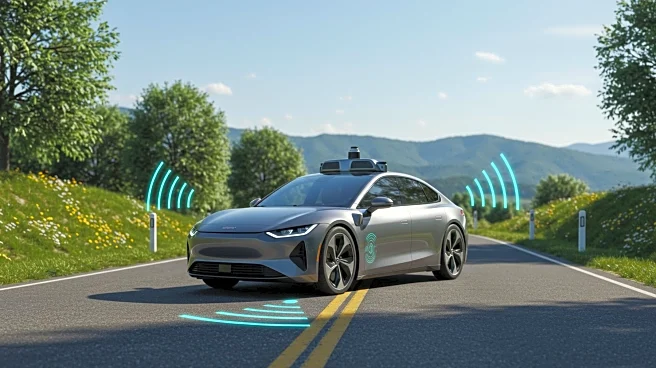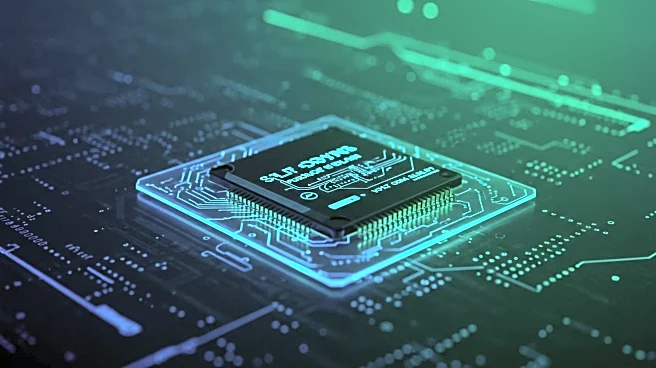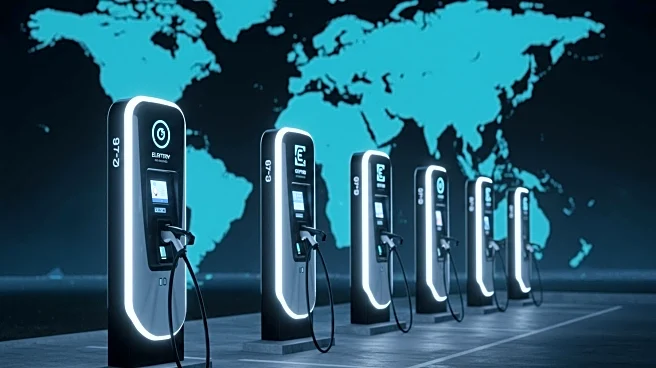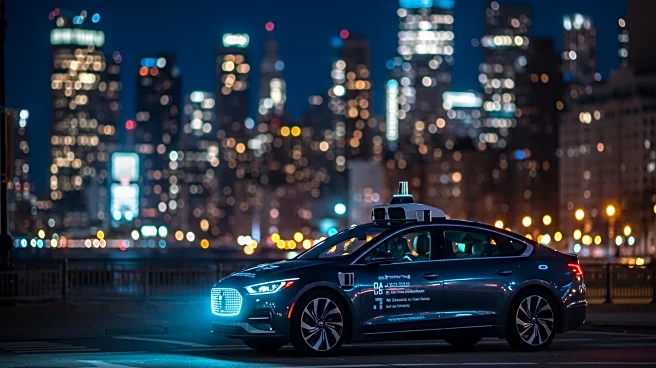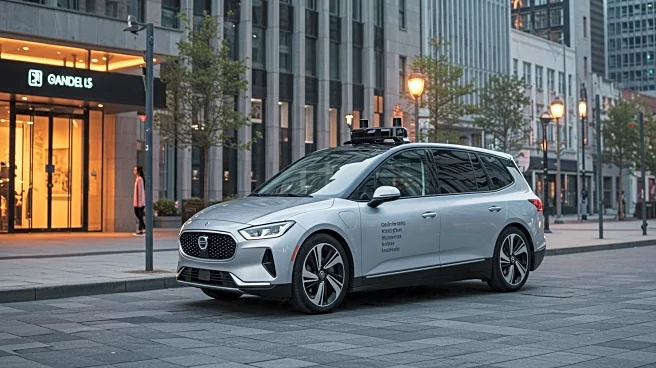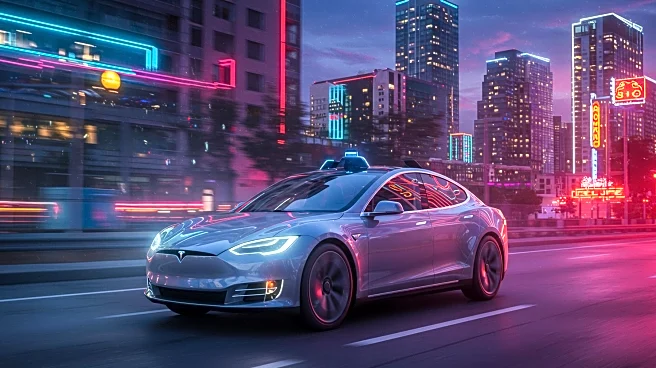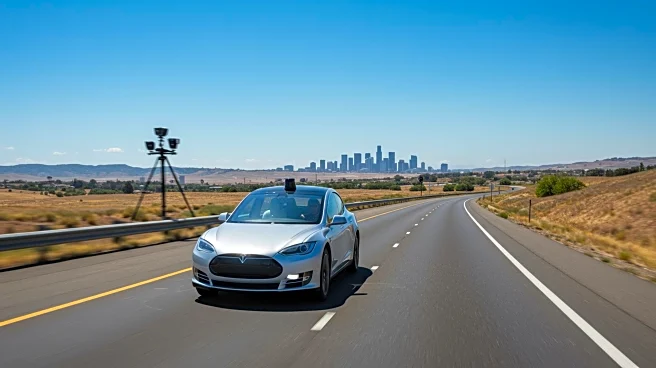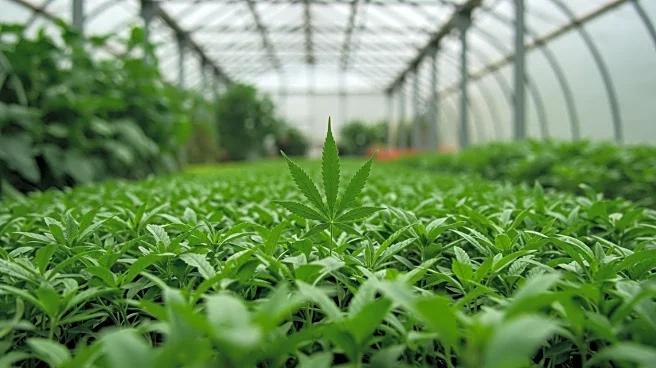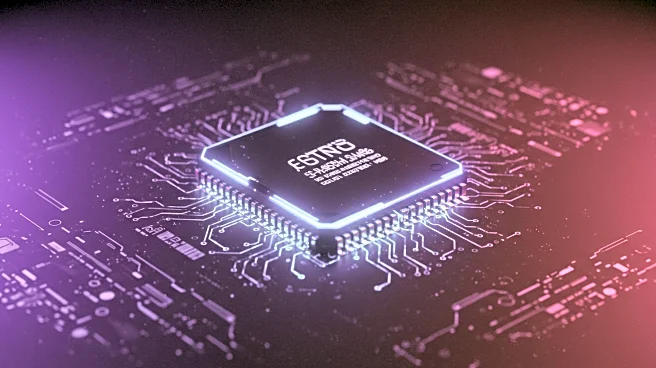What's Happening?
Tesla has released new footage of its self-driving Model Y successfully navigating Swindon's Magic Roundabout, a notoriously complex junction in the UK, without human intervention. This demonstration is part of Tesla's broader initiative to advance its Robotaxi technology, which aims to offer fully autonomous taxi services. The company has been conducting test drives in Austin, Texas, and is working on refining its Full Self-Driving (FSD) technology by training its software on real-life situations encountered by existing Tesla vehicles. Despite some errors during beta testing, the technology is improving with feedback from human passengers present during test drives.
Why It's Important?
The development of Tesla's self-driving technology represents a significant shift in the automotive industry towards autonomous vehicles. If successful, this technology could revolutionize everyday travel by reducing the need for human drivers, potentially decreasing traffic accidents and fatalities. The introduction of more electric vehicles equipped with self-driving capabilities could also contribute to reducing carbon emissions and noise pollution in urban areas. However, the technology faces challenges, including regulatory approval and public acceptance, especially concerning safety concerns.
What's Next?
Tesla's self-driving technology is pending regulatory approval, which is crucial for its widespread adoption. The British government is preparing to allow self-driving vehicles without drivers as early as 2026, indicating potential future acceptance of such technology. Tesla continues to refine its FSD technology, aiming to address safety concerns and improve reliability. The company is also exploring ways to integrate solar power into its vehicles, enhancing the environmental benefits of electric vehicle ownership.
